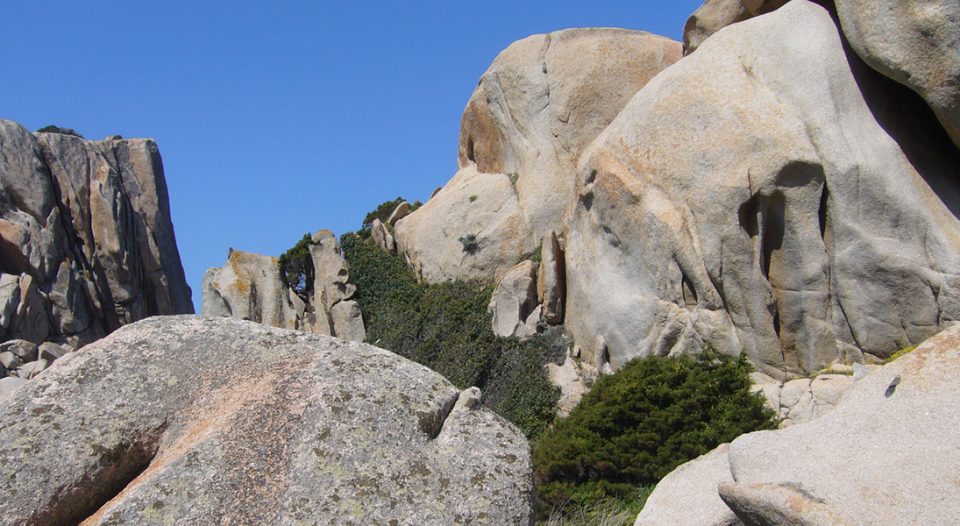Lectionary for Aug. 27, 2023
13th Sunday after Pentecost
Isaiah 51:1-6; Psalm 138;
Romans 12:1-8; Matthew 16:13-20
Not long ago I reflected a bit with my therapist on a recent crisis of faith. She asked a great therapist question: What would a magnificent, wonderful relationship with God look like? I think my relationship with God is at its healthiest when I know and feel that God is dependable and not going anywhere, no matter what happens—even when I and the church do the wrong things. In a word, I guess I was looking for grace. But I was looking for the kind of grace that can be relied on and not moved—something like a big old rock or even a mountain. While this week’s lectionary passages speak of dependable rocks, they aren’t speaking of God.
The first rock we encounter is from Isaiah 51. The postexilic community was called to look to the rock from which they were cut and the quarry from which they were hewn. Who or what might those be? The second verse supplies the answer: Abraham is the rock and Sarah is the quarry. Just as the old, childless Abraham and Sarah seemed to have no prospects for a future and the preserving of their names, the returned children of Israel must have wondered: “What will become of us?” A relatively small kingdom had been reduced to an even smaller mixed community of returned exiles and people the invading powers didn’t find important enough to exile in the first place. What future could there possibly be for such a rabble?
But just as God provided hope and a future for Sarah and Abraham, God provided hope and a future for the reconstituted Jewish people. They are after all, God says metaphorically, chips off the old block of their famous ancestors.
While this week’s lectionary passages speak of dependable rocks, they aren’t speaking of God.
Moving toward the Gospel of Matthew, we have two more rocks in view. The first is Simon, whom Jesus nicknamed Peter (or “Stone”). Peter was, undoubtedly, a person of major importance in the early Jesus movement. He seems to have been Jesus’ head disciple and part of the inner circle (Peter, James and John). Peter was one of the last disciples to see Jesus before his execution and one of the first to race to the empty tomb. He pioneered Gentile outreach and inclusion (Acts 10–11). And in this reading, Peter gives an absolutely correct answer.
Jesus asked his disciples; “Who do people say that the Son of [Humans] is?” Most guessed a prophet reborn or returned from the dead. When Jesus gave Peter a chance to speak for himself, he identified Jesus as the Messiah, the Son of the living God. Jesus was quite pleased with this response, telling Simon that he could not have come up with that answer on his own—the living God of which Peter spoke had blessed him with this knowledge. As a result of his trustworthiness in knowing who Jesus really is, Peter was given the keys to the kingdom, so to speak. Whatever Peter allowed or forbade in his own teaching, Jesus would allow or forbid.
We, of course, need to contextualize this promise. Peter was initially resistant to the idea of non-Jews being allowed to participate in the Jesus movement. But once he was convinced that it was God’s pleasure to expand the holy community to include Gentiles, those who argued for exclusion could not overcome Peter’s inclusion.
The second rock in the Gospel is a literal rock, that is, Mount Hermon. Simon was petros (a stone) and Jesus would build his church on petra or a rock/ledge/cliff. Jesus and his disciples were in the region of Caesaria Philippi, at the foot of Mount Hermon. On the slope of that mountain, a cave had been converted to a pagan shrine, known as “the gates of Hades” that Jesus referenced. Jesus, by saying he would build his church—his “called out community”—on this rock, was using the language of religious takeover. Not even a major Greco-Canaanite religious shrine would be able to win against the humble kingdom symbolized by yeast and mustard. Jesus wasn’t going to take over territory like the Romans—through force of arms and threats of violence. Instead, the Jesus movement advanced through love and inclusion. Mount Hermon was just one rock that would be a foundation for the kingdom of heaven.
I usually think of God as the “Rock of Ages,” which is true and accurate. God also calls on me to expand my biblical imagination. Abraham and Sarah are rocks that offer hope to their descendants. Peter was a rock because of his solid answer to Jesus’ question and his dependable insistence that the church should include everyone among whom God was working. And lastly, the least likely places for God to build an outpost of the kingdom are the very places where Jesus took his disciples to say, “Even here, I will build my church.”




